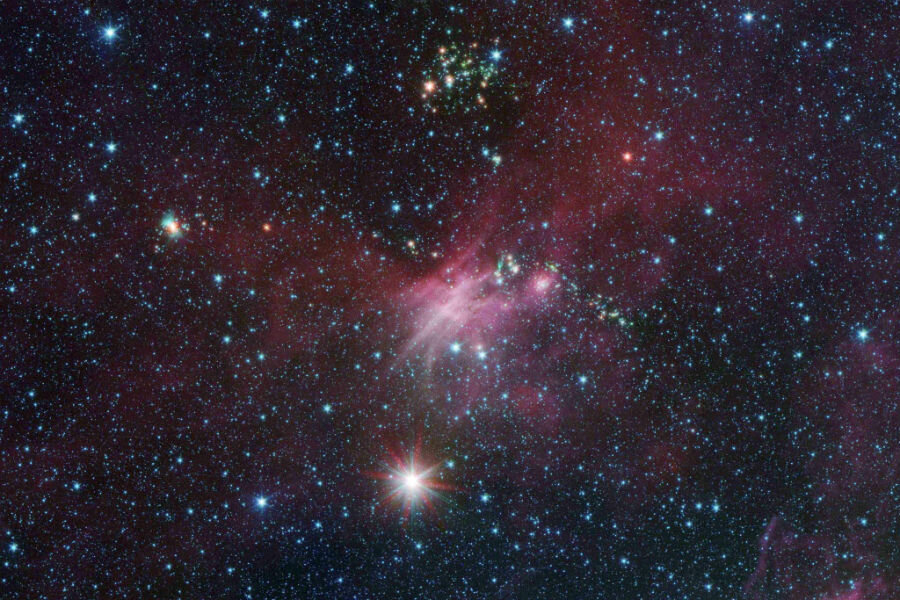Astronomers spot 'planet-eating' star similar to our own sun
Loading...
As the latest Star Wars installment draws crowds to movie theaters this weekend, scientists are talking about a real Death Star, of sorts, about 300 light-years away.
Using a 3.6-meter telescope at the La Silla Observatory in Chile, a team of researchers have been studying a star very similar to our sun. But unlike our friendly neighborhood star, however, this one is known to have destroyed some of its own planets, in a possible preview of what the future might hold for some planets in our own solar system.
While there is no need to worry about our sun destroying any of the planets in our solar system any time in the near future, the newly-discovered star is providing scientists with new information about the evolution and life cycle of star systems. As scientists continue to seek out and discover new and unusual stars and exoplanets, they are continuing to build a more complete picture of how the universe works, as well as a greater understanding of how our own solar system came to be.
The star, HIP68468, was studied as a part of a multi-year project attempting to discover planets that orbit "solar twins," stars that are similar to our sun. While exoplanets have been discovered at an increasing rate over the past several years, it is still considered rare to find exoplanets orbiting a solar twin of about the same size, color, and luminosity.
In a paper published in the Astronomy & Astrophysics journal, the research announced that they had discovered evidence for a super-Neptune and a super-Earth (both similar to, but larger than, our Earth and Neptune) orbiting HIP68468. If confirmed, the super-Earth would be the first ever discovered around a solar twin, a step closer to finding an Earth-sized planet around a star similar to our own.
But the researchers also discovered something unusual about the star itself. HIP68468 has much more lithium than would be expected of a star of this age, as well as a number of other elements usually associated with rocky planets. Stars are so hot that any lithium present in the star is consumed over time, and a star 6 billion years old should not have that much left in its solar atmosphere. Therefore, the evidence would indicate that HIP68468 has consumed some of its own planets to replenish its supply.
"It's as if we saw a cat sitting next to a bird cage," Debra Fischer, a professor of astronomy at Yale who was not involved in the study, said in a statement. "If there are yellow feathers sticking out of the cat's mouth, it's a good bet that the cat swallowed a canary."
While it might seem concerning at first that a star so similar to our sun "ate" one or more of its planets, there is no cause for immediate worry. First, our sun is only 4.5 billion years old, a full 1.5 billion years younger than HIP68468, which means we will likely have plenty of time before anything so drastic as losing our native planet might happen. Furthermore, there is no knowing how different the planetary layout of the HIP68468 system was from our own that could have led to a planet or two falling in.
"[This information] doesn't mean that the sun will 'eat' the Earth any time soon," Jacob Bean, assistant professor of astronomy and astrophysics at the University of Chicago and co-author of the study in the statement. "But our discovery provides an indication that violent histories may be common for planetary systems, including our own."
Current projections show that Mercury may one day fall into the sun, and as the sun grows into a red giant towards the end of its life cycle (about 5 billion years from now), it may become large enough to consume some of the inner planets. But for now, there is nothing to worry about, at least as far as the sun is concerned.
"It can be very hard to know the history of a particular star, but once in a while we get lucky and find stars with chemical compositions that likely came from in-falling planets," Fischer said.
The research team is continuing to monitor 60 solar twins in the night sky in an attempt to find Earthlike exoplanets.








